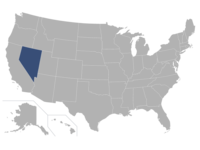NV Energy must show homework before cutting summer power rates, PUC says

Electricity rates in Southern Nevada are slated to go down 5% in July, August, and September, and 16% in the northern part of the state, under filings submitted by NV Energy to the Public Utilities Commission Monday. But a spokesman for the PUC says the applications were insufficient and are on hold until the utility submits additional documents.
On Wednesday, shortly after they were posted on the PUC website, the agency briefly listed the applications as completed and approved. They were later removed from completed dockets. A spokesman said the listing was in error.
With projections of July power bills averaging $470 in Southern Nevada, NV Energy announced last week it would “step in and deliver a solution” from rising bills in the form of a temporary rate cut.
PUC spokesman Peter Kostes says the commission wants to know “the rate schedules that would result if the Commission does not grant the utility’s request” to lower its deferred energy rate more than a quarter of a cent from where it currently stands.
Nevada law allows NV Energy to modify its deferred energy rate by no more than a quarter of a cent per kilowatt hour every three months. But the law also allows the Public Utilities Commission to approve quarterly rate adjustments that exceed that maximum threshold.
“Additionally, the Commission communicated to the utility the procedural requirement that the request for deviation be supported with information necessary for the Commission to evaluate whether there is good cause for granting the request,” Kostes said.
Electric bills are largely determined by two rates – the base tariff energy rate, calculated on the utility’s purchased fuel and purchased power costs on a 12-month average; and the deferred energy adjustment, based on the difference between the company’s actual costs for energy and its revenues.
If costs exceed revenue, the amount under-collected from ratepayers is factored into future rates. Conversely, if revenue exceeds costs, the amount over-collected is credited against the under- collected amount or refunded to ratepayers later.
NV Energy’s deferred energy account balance is currently hundreds of millions of dollars under-collected, meaning credits for customers are not in the foreseeable future.
Save now, pay more later
NV Energy is prohibited from marking up the cost to consumers of energy the utility purchases, but it can earn roughly 8% via carrying costs when it buys energy for customers to use now but pay for later.
NV Energy is seeking to achieve its summer rate cut in Southern Nevada by reducing its deferred energy charge for residential customers. Without the adjustment, the deferred energy rate would increase.
For non-residential customers, an increased deferred energy rate would have been replaced by a credit.
In Northern Nevada, NV Energy would decrease the deferred energy component of the electricity rate to zero. Without the adjustment, the rate would increase by a fraction of a cent per kWh.
NV Energy noted in its filing with the PUC that its proposed rate cut will reduce the company’s cash flow.
“However, despite the short-term cash flow reduction, the proposed rates still result in sufficient collection of the outstanding balance over the next quarter,” the utility wrote to the PUC.
A spokeswoman for NV Energy said she had no information on the utility’s insufficient filing.








